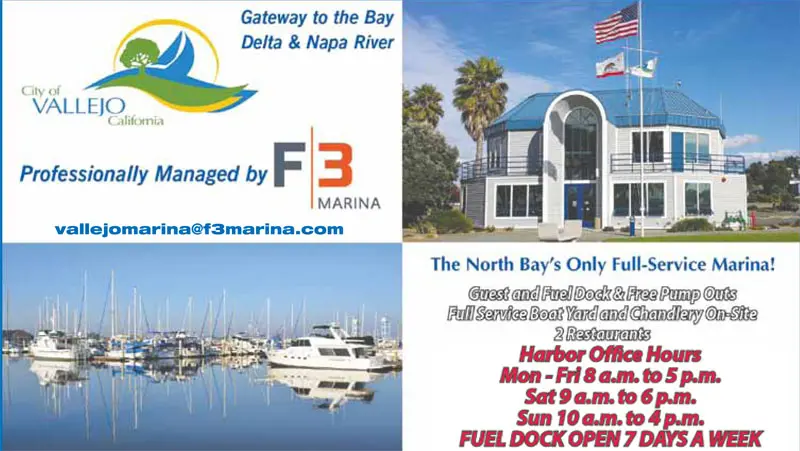
Help Keep Water in the California Delta
We thank Winston Bumpus and the Recreational Boaters of California (RBOC) for helping us all keep an eye on issues affecting sailing and boating on the Bay and Delta. Winston recently wrote, asking us to share the following information and encourage us all to speak up:
RBOC is requesting that boaters take action by December 16 in opposition to the latest draft Delta Conveyance that would negatively impact the ability of the recreational boating public to navigate in the waterways of the Sacramento-San Joaquin Delta.
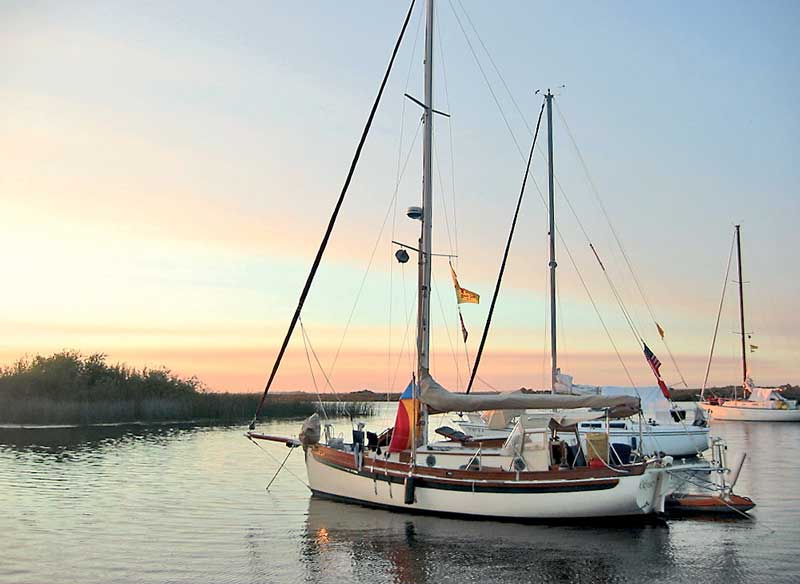
In summary, the key concerns are:
- Disruption to navigable waters in the Delta for 14 years during construction.
- Does not adequately address climate change and its impacts on decreased snowmelt.
- Unquantified Groundwater Impacts (for Example Table 8.0) non-meaningful LTS – Less Than Significant.
- Does not create any new sources of water.
- Will wreak havoc on the aquatic species, wildlife, inhabitants, recreational users and supporting industries.
For more information, a copy of the letter, a link to the EIR, and a way to contact your legislative representatives, boaters can go to www.rboc.org
We often sail to leave our troubles behind, but without our attention trouble may follow.
Good Jibes: Galápagos National Park – A Dream Dive Destination (Latitude 38 Verbatim)
Welcome to Good Jibes episode #68. This week we’re casting off with the article “Galápagos National Park — A Dream Dive Destination” from the September 2022 issue of Latitude 38, read by fellow sailor and host Monica Grant.
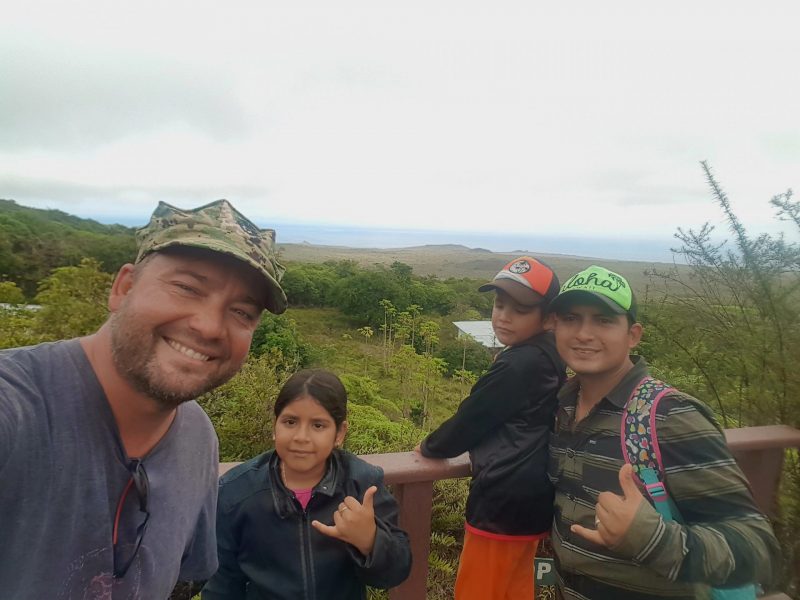
Hear Dustin Reynolds’ stories from his dream dive in the Galápagos Islands.
This episode covers everything from penguins to whales. Here’s a small sample of what you will hear:
- How were the Galápagos Islands?
- What is an Ocean Cruising Club Challenge Grant?
- Where do you find blue-footed boobies and red-footed boobies?
- What are the best tours in the Galápagos?
- Does Google Translate work in person?
- What are some tips for diving in the Galápagos?
- Why did the Galápagos remind Dustin of Antarctica?
- What animals can you see in the Galápagos?
Follow along and read the article at https://www.latitude38.com/issues/september-2022/?swcfpc=1#72.
Listen to the episode on Apple Podcasts, Spotify, Google Podcasts, and your other favorite podcast spots — follow and leave a 5-star review if you’re feeling the Good Jibes!
Early this year Dustin was a Good Jibes guest. You can tune in to the episode here: https://www.latitude38.com/lectronic/podcast/episode-23-dustin-reynolds-learning-sail-around-world/. You can also read more about Dustin’s sailing story in the February 2022 issue of Latitude 38: https://www.latitude38.com/issues/february-2022/#53.
Vallejo Marina: Gateway to the Bay, Delta, and Napa River
40′ to 45′ foot slips are now available at $9.97/ft. www.ci.vallejo.ca.us
Historic Sunken Steamship Found in Pacific Northwest
The remains of a steamship that sank in the Pacific Northwest in 1875 have been discovered approximately 40 miles south of Cape Flattery, WA. Headed by Jeff Hummel and Matt McCauley, the team from Rockfish, Inc. has discovered the wreck of the SS Pacific, a steamship that operated between San Francisco, Victoria, BC, Seattle and Tacoma. The discovery is the culmination of Hummel’s 30-year search, and the team’s twelve search expeditions conducted between 2017 and 2022.
Several other groups have looked for the wreck, with the first known search being conducted in 1985. Each used their own metrics to cover a broad area, but none were successful. As part of their process, Rockfish interviewed dozens of commercial fishermen to see what they may have recovered in their bottom-trawling nets. Occasionally, fishermen would find coal, the chemical analysis of which indicated it was from a mine operated by Goodall, Nelson, and Perkins, owners of the SS Pacific. Eventually Rockfish identified a search area of approximately 13 x 26 miles, which was later narrowed down to an area of 1 x 2 miles.
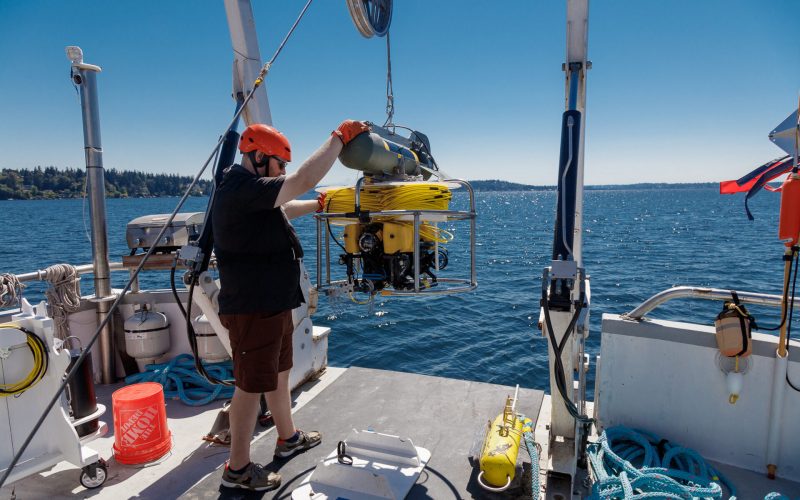
The team first imaged the wreck site in October 2021 using sonar survey. Although the result did not appear to be a shipwreck, it did warrant further imaging. Weather conditions made this impossible until July 2022, at which time Rockfish deployed two custom-built ROVs. Despite multiple video surveys of the area, the nature of the target was still unclear until, during one of the surveys, the ROV was manipulated to grasp samples that were then identified as wood from the main portion of the wreck.
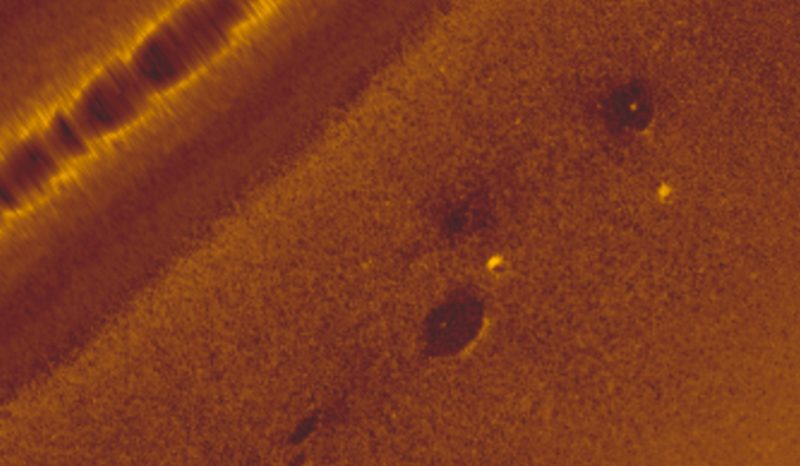
Last month, Rockfish, Inc. (and its associated nonprofit the Northwest Shipwreck Alliance) was granted exclusive salvage rights to the wreck. Its exact location is undisclosed, and there is a court order preventing other competing operators from entering the area. But the discovery has opened a new chapter in one of the nation’s most significant maritime tragedies.
While on a routine journey, the SS Pacific collided with the sailing vessel Orpheus, approximately 40 miles southwest of Cape Flattery. She carried an estimated 275 passengers and 50 crew. Within 20 minutes of the accident the Pacific foundered and sank. Only two people survived to tell the story.
The SS Pacific was an 876-ton side-wheel passenger steamship built in 1850 in New York. She was 233 feet long with a beam of 33 feet, six inches. The wooden-hulled ship was initially put to work during the California Gold Rush, running between San Francisco and Panama. Then in 1861, while servicing a run from San Francisco to the Columbia River, she struck a rock and sank. She was raised and taken to San Francisco for repairs and continued to work until 1872, at which time she was retired and cast aside to rot in the mud. When gold was found on the Stikine River in British Columbia, the Pacific was resurrected to carry miners and speculators to Canada. Under her new owners she was rebuilt for a cost of $40,000. Although the work was mostly cosmetic, the ship was proclaimed seaworthy by the US Steamboat Inspection Service and licensed to carry 203 passengers and a crew of 52. Thus, she would sail under the captaincy of Jefferson Davis Howell, a veteran of the Civil War and brother-in-law of Jefferson Davis, president of the Confederate States. Her route would be the PNW, between San Francisco, Victoria, BC, Seattle and Tacoma.
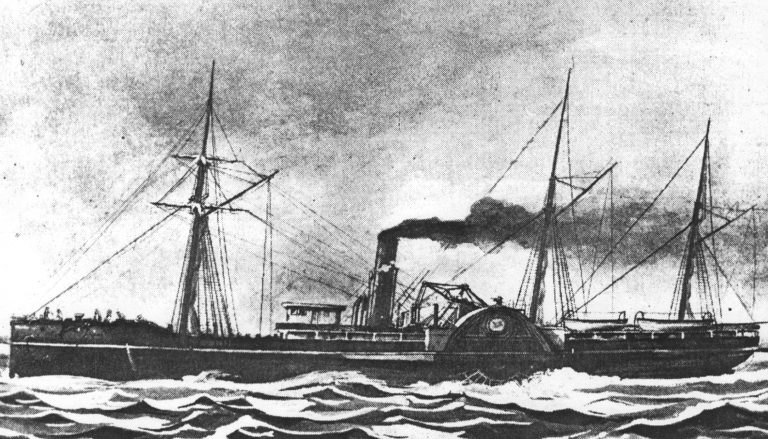
Washington State’s Historylink.org documents that upon leaving Esquimalt, BC, on the morning of November 4, 1875, the Pacific carried an estimated 325 souls, 2,000 sacks of oats, 300 bales of hops, 261 animal hides, 11 casks of furs, 31 barrels of cranberries, 10 cords of wood bolts, 280 tons of coal, 18 tons of general merchandise, 10 tons of sundries, six horses, two buggies, two cases of opium and a strongbox containing $79,200 in cash. It is also believed that the gold carried by passengers amounted to a value of more than $100,000.
There are conflicting details as to the exact sequence of events, but all agree that the 25-year-old Pacific was overloaded and unbalanced, and that to counteract her heavy listing, the captain had ordered two port-side lifeboats be filled with water. Also, as night closed in, her only running light was the white light at the top of the mast. It was this light, spotted by the watch crew aboard S/V Orpheus, that led to the calamity that followed.
While Orpheus‘s captain was belowdecks checking charts ahead of their turn toward the Strait of Juan de Fuca, the watch crew were under instruction to “starboard the helm” if they saw a light. Mistaking the Pacific‘s masthead light for the Cape Flattery Light, the crew notified the captain. Again, there are variations in the accounts of who turned the ship, but the action put the Orpheus in the path of the Pacific. Neither vessel was aware of the other until it was too late. The Pacific reportedly attempted to reverse, but a collision was imminent.
Though it appears the contact was relatively slight, it was repeated “with the Pacific‘s bow striking the Orpheus just aft of the main hatch, before glancing off and again striking her further aft at the mainmast shrouds.” As the two ships ran broadside against each other, the Orpheus took a third hit, this time at the mizzenmast chains. Then, as quickly as they had met, the two vessels continued on their opposite paths.
Soon after the collision the Pacific broke up and began to sink; all but two of her passengers and crew were lost to the sea. There are reports that the vessel was unsound, that the water-filled lifeboats contributed to the deaths as people unsuccessfully launched them from the ship, and that the accident occurred in the first few hours of a 100-year storm. Whatever the details, at that time the disaster represented the largest marine loss of life on the West Coast, a claim still held today.
The salvaged remains of the SS Pacific will reside with the Northwest Shipwreck Alliance, and will become the centerpiece of a maritime museum the organization intends to build in Seattle.
If you’re interested in shipwrecks, particularly those in San Francisco Bay, tune in to our Good Jibes podcast with Brian Crawford on “Exploring Shipwrecks.”
- Racing
- International Racing
- Current News
- Maritime History
- West Coast Sailing
- Northern California Racing
RC Keefe Crosses the Bar
The San Francisco Bay Area, the St. Francis Yacht Club and the sport of sailing have lost a giant as Robert “RC” Keefe passed away at age 90 last weekend. Keefe was the StFYC’s most senior staff commodore, having served in the lead role way back in 1975.
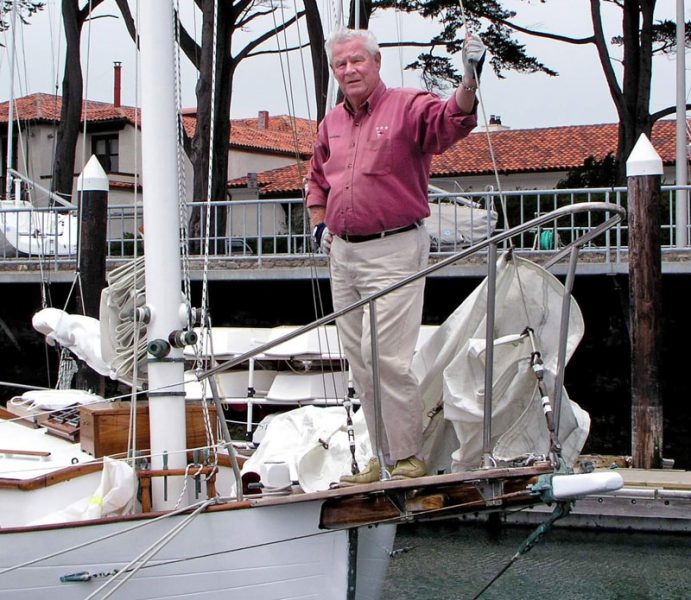
The Founding of the Big Boat Series
As former president of Barient Winches. which produced the game-changing self-tailing winch, Keefe was instrumental in bringing organized international yacht racing to Northern California and the West Coast with the founding of the Big Boat Series in 1964. (Rolex has been the title sponsor since 2005.)
“Chubasco coming north from Newport Beach to race in 1959–60 was really the start of the so-called Big Boat Series,” recalled Keefe when I interviewed him a few years back. “We didn’t realize that at the time.”
One of the legendary races in the history of the club took place between Bolero and Baruna on April 10, 1960. The models and paintings that adorn the interior of the St. Francis tell the story of the matchup. Sports Illustrated even showed up to cover the event.
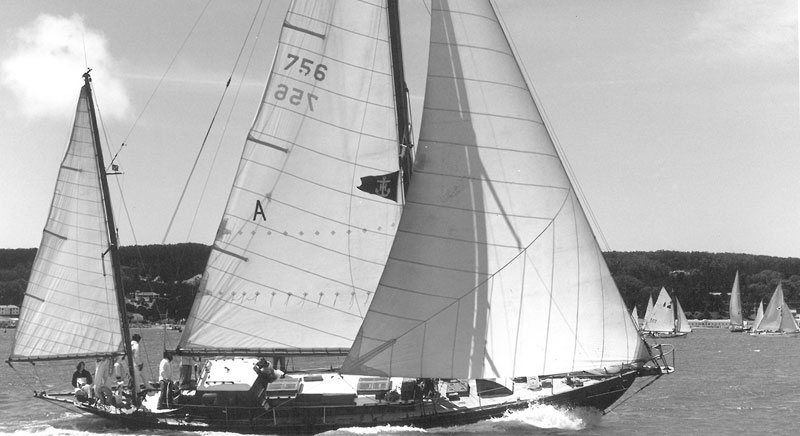
The first BBS featured nine yachts from California. Keefe worked with then-commodore Stan Natcher to create a regatta worthy of welcoming competition from around the world. (Athene, a Sparkman & Stephens 63-ft yawl, captured the inaugural St. Francis Perpetual Trophy.)
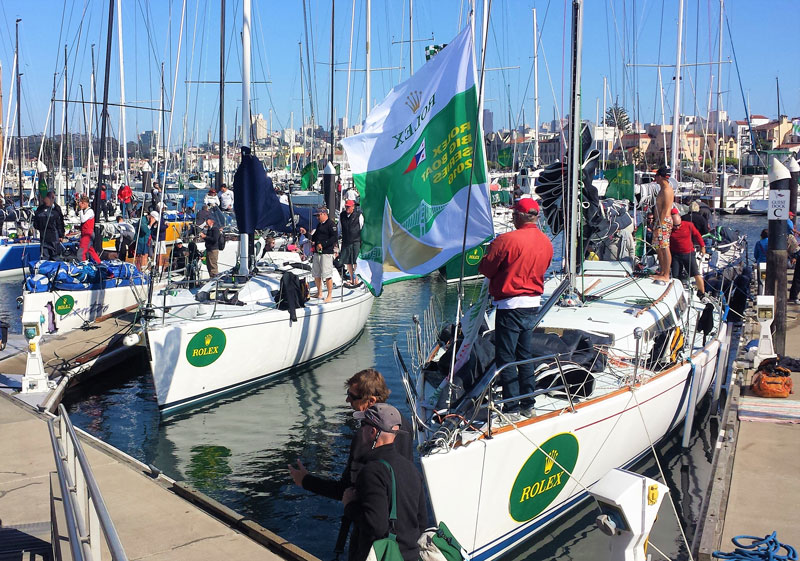
He was part of a group of men in the 1960s that included Natcher, James Michael, Tim Mosely, Derek Baylis, Jim Kilroy and others who were notable in their shared vision of what West Coast sailing could become, not only on the racecourse, but through industry and business as well.
Just the mention of those legendary racing yachts conjures up images of the profound impact Keefe and these men had in shaping the foundation of yacht racing in the San Francisco Bay Area and beyond. In 1966, StFYC named Keefe the Yachtsman of the Year.
6-Meters, 12-Meters and the America’s Cup
He went on to rekindle club interest in 6-Meters with the purchase of Toogoolooloo in 1969, renaming her St. Francis IV. He brought in a young Tom Blackaller to lead the program, which eventually led to multiple championships (16 wins, no losses) over the Australians from 1970 to 1979 in the American-Australian Challenge Cup. This all became the impetus behind the Golden Gate Challenge in 1984 to compete in the America’s Cup.
That effort again showcased West Coast innovation in the revolutionary front-ruddered 12-Meter yacht, designed by Gary Mull, Heiner Meldner and Alberto Calderon. Nicknamed “The Geek,” the yacht’s radical yet tricky steering system capitalized on straight-line speed capabilities. Keefe was an integral part of the syndicate leadership, and his son Ken was the project manager on the team.
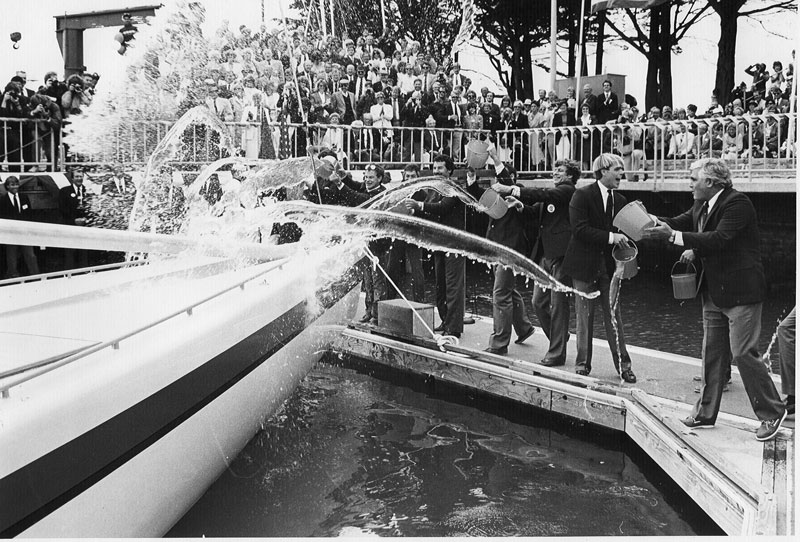
The Golden Gate Challenge, according to Keefe, was the “total brainchild of Blackaller. I had been involved in 12-Meters for some time in Newport, Rhode Island. There were some people here who felt they could raise the money, and that was all that Thomas needed. He ran the whole program, he sailed the boat, he built the boat — it was a Thomas David Blackaller effort.
“What he didn’t have was the checkbook to carry it forward,” recalled Keefe. “But there was a group of men here who said, ‘OK, we’ll do it.’
“What wasn’t OK were all the controls to control the boat. Thomas used to describe sailing the boat as ‘a woman who has had too much to drink driving a cart of baskets through a Safeway store!’ You could never really tell what way it was going to go.
“Sometimes the boat was blazingly fast. The problem was that it was going right when you wanted it to go left. But the other teams could see that too, though they could see that even though she was going in the wrong direction, she was going fast in the wrong direction!
“My son Kenneth, with Paul Cayard, was responsible for the build of the boat, maintenance of the boat, repairs to the boat, and keeping it sailing,” said Keefe. “Ken would sleep all day and work all night with his crew in Australia, then when they also needed him on board, he was there.”
Model Yacht Collection
One of RC’s most cherished legacies is his work behind StFYC’s model ship collection. Just step into the clubhouse and you can’t help being instantly drawn to the rich and illustrious history of each and every model in the building.
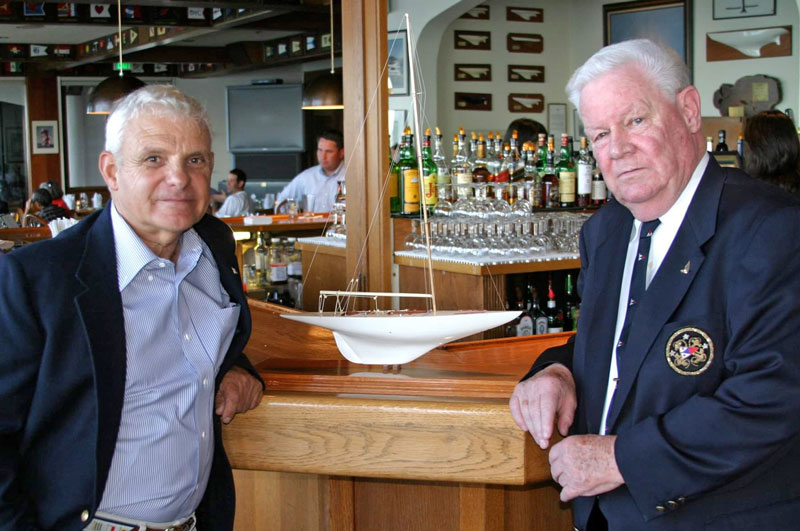
“One of the most unique things going on at this club, in relationship to every other yacht club around the world, is our model collection,” Keefe recalled. “The model room at the New York Yacht Club is what it is, world famous. We don’t pretend to be in competition with them. They have been at it for 150 years and they are the holy grail. We recognize that, and they are our friends. If you put them on the pedestal, all the rest of us are somewhere else.
“We are doing something really unique here,” said Keefe. “The membership of this club has sponsored this to make it happen. The yacht club has always had models, but only as decoration or atmosphere. They were never really considered a collection.
“In 1976 the club was destroyed by fire, and 12 models in the building were either consumed or very badly damaged. For the next 25 years many of those models were replaced, and a few new ones were donated by various members.”
The club itself had never commissioned a new model. In 2004 then-commodore Terry Klaus appointed Keefe to create a museum-quality model collection.
“Each model tells a story concerning the history of the yachts and the men who owned them,” remarked Keefe. “They speak in a way that paintings, photographs, and the written word cannot equal. A hundred years from today they will illustrate yachting achievement during the latter part of the 20th century as furthered by the St. Francis Yacht Club membership. The collection will continue to grow, and be of value to our members, and to all that appreciate fine marine art.”
Keefe also served as StFYC’s chief historian and regularly contributed to Mainsheet, the club’s monthly magazine.
He had a favorite passage from Ships by John Masefield (1868-1967), which befits not only the model collection, but his life as well: “They mark our passage as a race of men; Earth will not see ships such as those again.”
Latitude 38’s Online Bookstore Is Open
From fiction to nonfiction, classics to underground favorites, history and how-to’s, navigating and maintenance, racing and cruising, triumph, tragedy and the joys of cruising, there is something for every sailor and every season at the Latitude 38 Online Bookstore.

